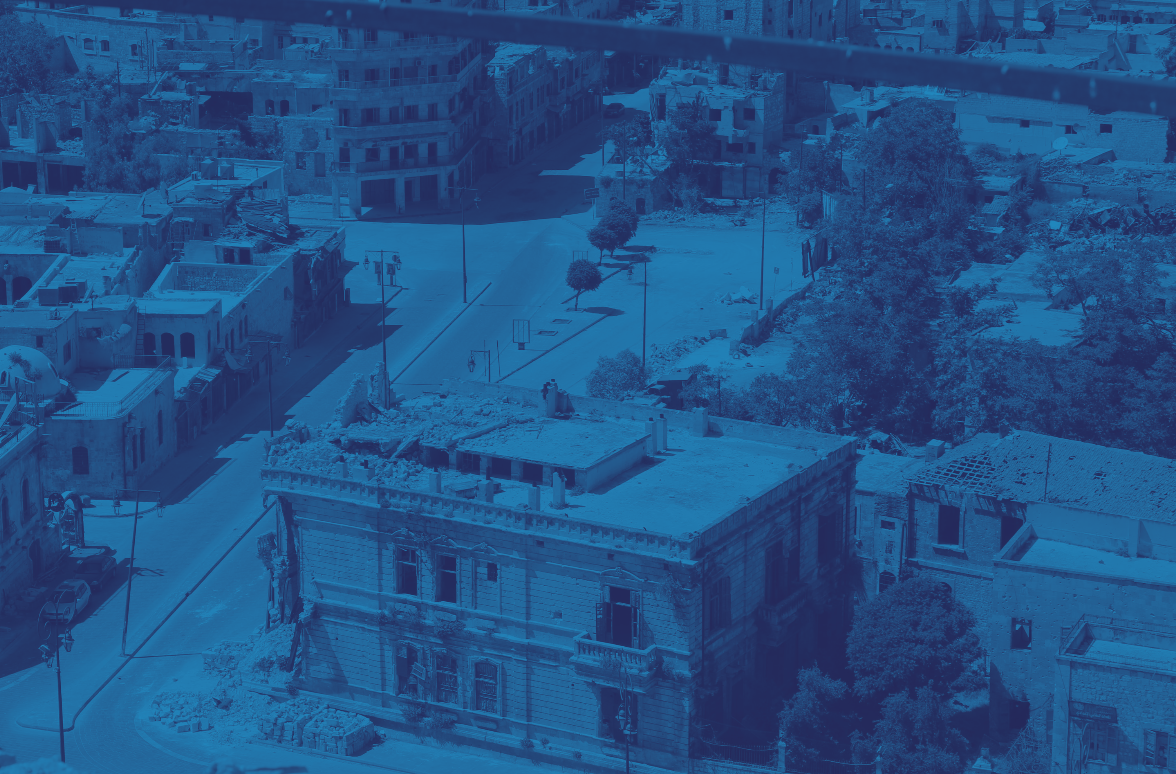
Written by Julia Garcia Alvarez
Introduction
Libya’s and Syria’s war conflicts have become very debated cases with regards to the resolutions adopted by the UN Security Council (hereafter UNSC or Security Council) on whether to authorise a military intervention to stop massive killings and the continuous human rights and international humanitarian law violations. The responsibility to protect obliges the international community to intervene in the sovereign of a State against its will when the State in question is unable to protect its own civilians from war and other crimes. But the role of the international community in Libya’s and Syria’s cases has been strongly criticized, as well as their compliance with the responsibility to protect. Also, the role of the EU in this crisis has been criticized, considering the incoherence between its narratives in favor of the responsibility to protect, and its passive position during the wars. In this short article, the author will compare the actions of the international community in both war conflicts. The mention of responsibility to protect in UNSC resolutions will be analysed, and conclusions will be drawn on whether the international community complied with its collective obligation to protect civilians from human rights violations.
Responsibility to protect
The responsibility to protect a population from international humanitarian law and human rights violations (hereafter R2P or responsibility to protect) was encouraged by the lessons of the genocides of both Rwanda and Kosovo, which ended up with the killing of thousands. The concept of R2P was mentioned for the first time at the UN World Summit in 2005, which referred to the responsibility of states to protect their population by preventing crimes of genocide, crimes against humanity, war crimes, and ethnic cleansing (Bannon, A. 2005). Moreover, the collective responsibility of all states – and not only the states involved – is recognised in articles 138 and 139 of the World Summit Outcome. Hence, all states must assist each other in fulfilling this responsibility and declare their preparedness to take timely and decisive action, through the Security
Council and in accordance with the United Nations charter, when national authorities manifestly fail to protect, and peaceful means have proven inadequate (UN General Assembly, 2005).
Therefore, according to the subsequent reports of the UN General Assembly in 2008 and 2009, a three pillars framework is established to define the responsibility to protect more in detail. The first pillar emphasizes the primary responsibility of individual states to protect the human rights of their populations (whether national or not) in scenarios of war crimes, genocide, crimes against humanity, and ethnic cleansing. The second and third pillars call upon the international community to assist states in fulfilling these responsibilities if national authorities manifestly fail to do so. Thus, the international community would have the collective responsibility to make a response (UN General Assembly, 2009). This framework has improved the consensus on some core aspects of the R2P principle, including the importance of prevention and the need to ensure that a “timely and decisive” response includes diplomatic, political, and humanitarian measures, as well as the need that the military measures, as last resort, always comply with the UN Charter and other principles of international law (J. M. Welsh, 2016: 76).
This is the definition of the responsibility to protect, at least in theory. After 2005, the concept of R2P made rapid progress and achieved global publicity. In 2009, the UN General Assembly held a special three-day debate on R2P and the majority of states were declared in favour of the norm’s core principles. In academia, the concept was the subject of many books and articles, and civil society focussed on promoting the term and meaning of R2P. However, in the real world, the impact of R2P was modest, given, for example, the lamentable international response to crises and human rights violations in Sri Lanka, the Democratic Republic of the Congo, and Darfur in 2008. By the end of 2010, the responsibility to protect faced three key criticism: first, the lack of efficacy, second, the wide and divergent understandings of the term and ambiguity undermined its status as a norm, and third, there was no actual legal reform that faces these challenges (A. Hehir, 2012: 6-8).
The war conflict in Libya
The war conflict in Libya started in February 2011, when the Arab Spring arrived and mass demonstrations were held in Benghazi against Gaddafi’s dictatorial and repressive regime, which soon spread throughout the rest of the country. Gaddafi had adopted oppressive domestic policies and threatened to massacre large numbers of civilians and peaceful protestors. Violence in Libya provoked an unusually rapid response from the international community (A. Hehir, 2012). On 22 February 2011, the Organization of Islamic Conference declared that Gaddafi’s strategies had caused a humanitarian disaster incompatible with Islamic and human values (Organization of Islamic Conference, 2011). Also, the Arab League suspended Libya and the African Union’s Peace and Security Council strongly condemned the indiscriminate and excessive use of force and lethal weapons against peaceful protestors (D. McElroy, 2011).
On 26 February 2011, the UNSC passed the resolution 1970, which referred to the situation to the ICC and imposed an arms embargo, travel ban, and asset freeze against Libyan authorities, which was a unified and rapid response from the UNSC. However, the violence continued, and on March 17 the Security Council passed resolution number 1973 which sanctioned the imposition of a no-fly zone over Libya, condemned the gross and systemic violation of human rights, and warned that Gaddafi’s acts may “amount to crimes against humanity” (UNSC, 2011). In this resolution, the UNSC was for the first time authorizing military intervention in a sovereign state against that state’s will in order to protect civilians and stop killings and war crimes. Although this intervention did not involve violent attacks on the battlefield, the no-fly zone used air power to protect civilians from mass killings. Thus, the prompt response and cooperation among the international community should be highlighted, especially, as mentioned, the League of Arab States, the African Union, and the Organization of the Islamic Council. Also, the European Union demonstrated its solid position in favour of intervention and cooperated with the rest of the international community. On 11 March 2011, the EU Parliament stressed that “the EU and its Member States must honour their responsibility to protect, in order to save Libyan civilians from large-scale armed attacks and pointed out that no option provided for in the UN Charter can therefore be ruled out” (European Parliament, 2011). However, despite external expectations and European narratives of a ‘comprehensive power role’, the Libyan crisis showed that the EU still acts in line with its traditional role as a civilian power, and the inability to go beyond this power damages the EU’s credibility as an international security actor (N. Koenig, 2014).
The UNSC expressly mentioned the R2P of the international community in Resolution 1973. Many authors and personalities agreed that Resolution 1973 and the subsequent intervention was a triumph for the responsibility to protect. In fact, it was announced that the R2P “had arrived” (Ban Ki-Moon, 2011). At first sight, the Libya intervention offered a model of collective responsibility for the future, as well as an example of how to deal with regimes that conduct large-scale crimes against humanity and gross human rights violations (K. Engelbrekt, M. Mohlin & C. Wagnsson, 2013).
Although the international community could prevent such attacks, this does not mean that the UNSC resolution was entirely successful. The goals of NATO were to end all attacks on civilians and to achieve that Gaddafi withdrew his forces, as well as gained access to humanitarian aid. However, the resilience of Gaddafi’s regime was underestimated, the operations ended another five months later, on 31 October 2011, and eventually, the UNSC authorised force in the Resolution 2016. The NATO intervention in Libya did not comply in all terms with the mandate of the UNSC, but NATO made its own decision on how to develop the military action (M. Nuruzzaman, 2013). It is estimated that 100 Libyans were killed before the rebels took up arms but tens of thousands died after NATO had started its bombing campaigns. Libyan casualties resulting from NATO bombings have been well reported by Human Rights Watch, Amnesty International, the BBC, and the New York Times. Thus, the application of R2P in Libya may have tragically resulted in the double commission of crimes, and massive killings of Libyan civilians by the Gaddafi forces and by NATO. (M. Nuruzzaman, 2013).
In a scenario of responsibility to protect intervention, military action is viewed with even more scrutiny concerning civilian harm. In this sense, NATO intervention was criticised for not following the rule of zero civilian casualty wars as only publicly and politically accepted levels of damage. Somehow the UNSC’s power and authorisation to issue intervention mandates have been undermined since then. (K. Engelbrekt, M. Mohlin & C. Wagnsson, 2013: 89). Despite this, the Gaddafi regime ceased and many violent attacks on the civilian population were avoided, hence the UNSC actions and NATO intervention was considered a success in Libya.
The war conflict in Syria
As happened in Libya, the Arab Spring arrived in Syria in 2011. A wave of pro-democratic and revolutionary protests also brought a calculated escalation of violence against peaceful demonstrators by the Syrian regime of Bashar al-Assad and the subsequent descent into a brutal civil war. Thousands of killings, tortures, and other massive atrocities and human rights violations were committed in the context of this civil war. In numbers, more than 400,000 people were killed, 1.9 million wounded, and 11.3 million either internally displaced or forced to flee the country (S. Akbarzadeh, 2019). Unlike the Libya case, the UNSC has been more part of the problem than the solution to the conflict in Syria. In fact, the Syrian conflict is an example of a double-manifest failure of the responsibility of a sovereign state and of the international community, particularly of the UNSC, to protect Syrians from mass human rights violations (S. Akbarzadeh, 2019).
Following the recent and previous example of Libya, the UNSC issued resolution 2118 in 2013 to order the destruction of Syria’s chemical weapons to prevent killings by this means, and ultimately to protect Syrian civilians. This resolution is an attempt of the Security Council to comply with its obligations derived from the responsibility to protect when the Syrian government is incapable to do it itself. However, on this occasion, the UNSC failed to prevent the massive killings due to political divisions and the particular interest of certain UNSC members. The Security Council should have taken further actions and planned an intervention to fulfill its responsibility to protect to stop massive killings. However, Russia and China vetoed eight Security Council draft resolutions on Syria (Garwood-Gowers, A. 2013).
China and Russia had clear strategic and commercial interests in Syria and used their veto power to defeat two UNSC resolutions on Syria, which resulted in the perpetuation of gross human rights violations in Syria. The West and the Arab League were seeking a Syria which would be militarily and diplomatically cut off from Iran. Russia also had a strong interest in Syria as a long-term arm and defence equipment buyer and for maintaining a naval presence in the Syrian Mediterranean seaport of Tartus. Iran, in its turn, was interested in not letting the Bashar Al-Assad government fall as that has the potential of seriously disturbing the regional strategic balance against Tehran (M. Nuruzzaman, 2013). As for the EU, it was unable to craft an effective, well-coordinated policy on Syria that could prevent any military action that led to massive killings (M. Pierini, 2016). The UNSC’s failure to uphold its responsibility to protect led the UN Special Envoy Lakhdar Brahimi to resign his post in despair in May 2014 (S. Akbarzadeh, 2019).
The reputation of the UNSC was quite undermined, to the point that the General Assembly took a highly unusual step: It publicly rebuked the Council, in the summer of 2012, for its inadequate response to the Syrian crisis, passing a strongly worded resolution expressing “grave concern” at the escalation of the violence and “deploring the failure of the Security Council” to agree on measures to ensure the compliance of Syrian authorities with its decisions. During the General Assembly debate that preceded the passing of the resolution, Assembly President Nassir Abdulaziz Al-Nasser lamented that the deadlock in the Council “sends the wrong signals to all parties in the Syrian conflict” (UN General Assembly, 2012; J. M. Welsh, 2016).
Conclusions
When members of the Security Council are united and come to an agreement –as they were in mandating and supervising the removal of chemical weapons in Syria– they can ameliorate conditions of insecurity and protect the human rights of thousands of civilians. But when they fail to find a common purpose and act according to their political and national interest, the impact is usually devastating to civilians on the ground and to the reputation and standing of the UNSC itself (J. M. Welsh, 2016: 80).
Despite the successful military intervention in Libya that took place two years earlier, the Security Council failed to protect the Syrian population and therefore did not comply with its responsibility to protect it. The UNSC members achieved consensus with great difficulty. There was a scenario of division between a majority of members defending the R2P international norm and a minority of members whose vetoes refrained from intervention. Eventually, the weakness of the Security Council was revealed in the Syrian case when the success of the intervention in Libya was still being celebrated. The Security Council failed to give an appropriate answer to deadly internal conflicts, and therefore to comply with its responsibility to protect. On the other hand, the inconsistent position of the UNSC in both cases also jeopardised the effectiveness of the responsibility to protect, as well as the credibility of the UNSC to use the responsibility to protect as the legal foundation for future interventions.
References

 The geopolitical role of the Sahel: the influence of the EU and other Great Powers in the Malian crisis
The geopolitical role of the Sahel: the influence of the EU and other Great Powers in the Malian crisis  Is Nuclear Disarmament Still a Dream? The Third Meeting of State Parties in Perspective
Is Nuclear Disarmament Still a Dream? The Third Meeting of State Parties in Perspective  Strategic Saboteur: Hungary’s Entrenched Illiberalism and the Fracturing of EU Cohesion
Strategic Saboteur: Hungary’s Entrenched Illiberalism and the Fracturing of EU Cohesion  The invention of development: power, narrative, and the afterlife of Truman’s speech
The invention of development: power, narrative, and the afterlife of Truman’s speech 


